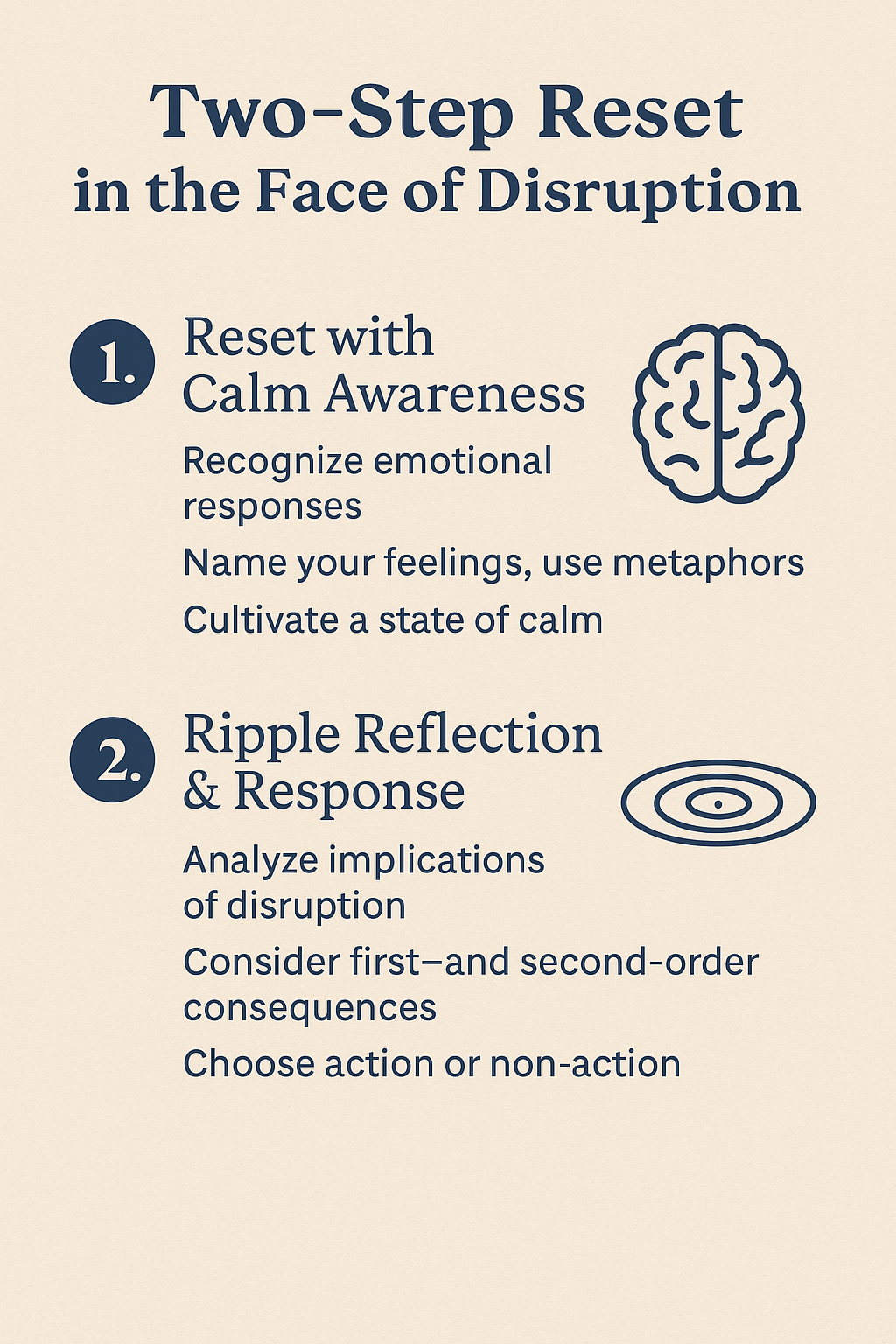Tiny Experiments, REACT: Dancing with Disruption - Part 7
We’ve learned how to experiment, reflect, and adapt. But what happens when life changes not gradually, but all at once? That’s where Chapter 9 of Tiny Experiments takes us: into the unpredictable, uncomfortable world of disruption.
Disruption is not just change. It’s abrupt, jarring, and often blindsiding. It derails our plans, challenges our assumptions, and shakes us at our emotional core. But as Anne-Laure Le Cunff reminds us, the question isn’t whether disruption will happen, it’s how we’ll dance with it when it does.
Embracing the “Maybe Zone”
One of the most powerful ideas from this chapter is what Le Cunff calls the “maybe zone.” Instead of clinging to control or spiraling into helplessness, we learn to sit in a space of possibility. Neither overly optimistic nor fatalistic, the maybe zone is where we say:
- “This might be bad… or maybe not.”
- “This could ruin things… or maybe lead to something new.”
It’s the mindset of the farmer in the old story whose horse runs away, only for the loss to eventually bring unexpected fortune. Every event, good or bad, is followed by another “maybe.”
This isn’t passive acceptance. It’s what psychologists call active acceptance (facing difficulty constructively) without false positivity or total despair. It’s also reflected in:
-
Taoism’s wu wei (effortless action),
-
Buddhism’s detachment from suffering, and
-
Hinduism’s vairagya, the calm of non-attachment.
-
Islamic’s Tawakkul (توكل) / Rida (رضا) / Fana’ (فناء).
Or as Vivian Greene put it beautifully:
“Life isn’t about waiting for the storm to pass. It’s about learning to dance in the rain.”
Step 1: Reset with Calm Awareness
In the face of disruption, our first instinct is often emotional: fight, flight, or freeze. Our amygdala kicks in, and the logical, decision-making part of our brain, the prefrontal cortex, gets hijacked. That’s why the first step in disruption is cultivating calm.
Le Cunff suggests:
-
Naming your emotions (a practice supported in psychology to reduce mental load)
-
Using metaphors or imagery (e.g., “I feel like a desert-exposed and scarce”)
-
Asking simply: “What am I feeling right now?”
This self-awareness helps deactivate reactive stress responses and creates space for wiser, more grounded thinking. As Stoicism and modern communication science both suggest: first, calm the system. Then think.
Step 2: Ripple Reflection & Response
Once we’ve made peace with our emotional landscape, we can begin to analyze the ripple effects of the disruption.
Imagine a stone dropped into water:
-
The first ripple is the direct effect.
-
The second ripple is what follows: changes in behavior, beliefs, decisions.
-
The outer ripples might affect others or long-term goals.
From here, we can ask:
-
Is this disruption worth a response?
-
Are the consequences minor or far-reaching?
-
Do I need to act, or is letting go the wisest path?
You don’t need a master plan-just a mindful step forward. Not every wave requires a lever to be pulled. Sometimes clarity means choosing stillness.

Life as a Waltz
Disruption, like life, is rhythmic. We’re not here to master it but to move with it.
Alan Watts said:
“This is the real secret of life-to be completely engaged with what you are doing in the here and now. And instead of calling it work, realize it is play.”
Chapter 9 reminds us: life is not a problem to solve, but a song to dance to. When we resist disruption, we miss the beat. When we lean into it, even clumsily, we stay alive to what’s unfolding.
In the trickiest moments, we’re invited to:
-
Engage in creative problem-solving
-
Find growth in unpredictability
-
Even-yes-find humor in the mess
This is the end of REACT: responding to life with curiosity, resilience, and calm.
What’s Next: IMPACT
With PACTs in place, ACTed upon with intention, and REACTed to through mindful reflection, we now turn to the final part of the book: IMPACT.
In the next post, we’ll explore how all these experiments come together in the social world, how our small inner shifts ripple outward to shape our teams, communities, and collective well-being.
Until then, if life throws you a storm… maybe just dance a little.